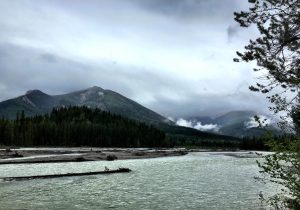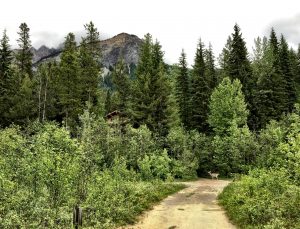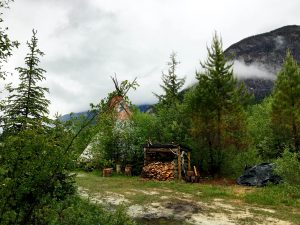Thanks to all who participated in the retreat!
 |
 |
 |
 |
 |
 |
 |
Many people hold that formally taking refuge in the Buddha, Dharma, and Sangha is what makes one a Buddhist. Although, I do not hold this position the formal act is a great way to solidify and reinforce your commitment to the spiritual path laid out by the Buddha Shakyamuni. For me what makes you a Buddhist is what is in your heart. Your intentions to aid all sentient beings, to remove any obstacles on your own spiritual path, to learn and apply wholesome methods and to achieve the great nirvana even if it takes thousands of life times is really what makes you a Buddhist. Being human though, we often like a point of passage and so in Buddhism there is the refuge ceremony.
Actually, this is rather a broad term. So say you have a broken heart and you buy a container of chocolate ice cream. You eat the whole thing. That is taking refuge in ice cream. Or you buy an expensive car and you show it off. That is taking refuge in a car. Or you have some tragedy in life and you making offerings to a god and pray he will remove the tragedy. That is taking refuge in a god. Or in order to get along in life, you find a powerful person who can grant favors like a job. That is taking refuge in a person. Or you can take refuge in your emotions, your intelligence, and your strength and so on.
In Buddhism, it is recognized that you may have to take refuge in this or that to get by in life. But as for our spirituality, we take refuge in the Buddha as the ultimate example of how to be free from the cycle of birth and death, the Dharma as the guide so we don’t have to discover all the information needed ourselves, and the sangha as a community of like-minded followers who aid in our progressing along the way.
Once there was a famous man named Upali who was not a Buddhist and decided to challenge the Buddha. So he went to see Shakyamuni to debate him. After talking to the Buddha, Upali completely changed his mind and realized the Buddha’s answers were better than his own. Being impressed he told the Buddha he was going to become a follower of his teachings. But Shakyamuni told him to wait. He said that Upali should make a complete investigation.
So, you may ask yourself, “As far as humans can tell, was Shakyamuni a Buddha?” A Buddha is someone who is awakened from the dream like state we call normal consciousness. Did he have some experience that woke him up? We cannot ask the Buddha about this but we can rely on history. Although the story of his awakening is full of myth and various tropes, the root of the story is that he did awaken and many people were witness to his being so. This included many people from other religions, political leaders and common people. Further, since people today still have awakening experiences then we know for sure that Shakyamuni was not claiming something impossible. We know from psychological studies that a person can experience a state where their limited self is dissolved and they “merge” with the universe. So a non-dual state is possible. For most people they have this experience and then they are back to their regular state of mind. What if, one could always be in that non-dual state? That person would be awakened!
The articulation of what the Buddha realized sitting under the Bodhi-tree, is called the Dharma. The Dharma is the collected teachings of the Buddha. According to tradition Shakyamuni did not actually speak all the teachings. Some were provided to students by other’s advanced disciples and then the Buddha Shakyamuni approved them. But the tradition holds these as being his teachings too. In side those teachings there are many different topics. Much deals with one or another aspect of the awakened state and how to cultivate it. There is also some myth, some parables, some history, and so on. Why are these teachings important? Although, nirvana is actually inside you and not something you manufacture from outside, you need a way to reveal it. You could search for thousands of lives to find all that is necessary and then spend thousands more to practice what you learned before you arrive at being a Buddha. But we do not have to do this because the search was done by the Buddha and so we can learn from him and apply it. This cuts the time to nirvana. So we take refuge in the Dharma as our guide to spiritual advancement. An interesting point is that the Buddha Shakyamuni did not say follow my teachings because I am Buddha. He said investigate the teachings and see for yourself it they are spiritually conducive and wholesome. Other religious teachers declared that their teaching was the answer, they did not have the courage and the certainty to allow people to find out for themselves. This is why I say Buddhism is for those who are spiritual mature. Mature people investigate and think through questions then come to a determination. Children are told an answer and simply believe it because some authority told them.
The sangha or community is also a refuge. In our everyday lives, we set goals and work hard to achieve them. This is the way of the world. However, Buddhism works in reverse of this. Let’s look at meditation. If you strive in your meditation you will certainly never achieve the freedom of meditation. The striving itself will prevent you. As I often say, you have to relax into meditation; it’s about letting go and not making happen. In short, we can say a major aspect of the Buddhist project is to remove the false notion of an ego, self, or soul. But if you strive to do this, it will never happen because the self that is striving is trying to remove the self. If you are successful, you still have a self. So like meditation, getting beyond the false self is a matter of letting go and not trying to make happen. However, if you are spiritually working of letting go and you live in a world that screams act and get, there are conflicts that arise both internally to your thinking and externally to your getting on in life. That is why there is a sangha. Teachers can help guide you particularly as your readings need deeper understandings, senior fellows can direct you and the rest can support you. So all of us are working together. At times this is so needed and at times others need your help.
Therefore, taking Refuge for the first time is a passage indicating your commitment to your spiritual growth and a formal joining the expansive community of those following the Way. Repeating the refuge on a daily basis is a reaffirmation to keep current in our mind stream that commitment to freedom and compassion.
110-138 18Avenue SE, Calgary, AB
Meditation in Practice (12:00-12:45)
The Japanese tea ceremony is a personal meditation and discipline based on learning methods for making tea and hospitality in order to appreciate the harmony of nature and the beauty of art, which was developed around the 15 century in Japan.
Join, Michiko Ono, tea expert and guide. She is certified by the Japanese Green Tea Association as a Japanese Green Tea (Nihon-cha) Instructor. She’s also certified as a Tea Sommelier by the Tea Association of Canada.
The first of her presentation will cover basic information and ideas on the tea ceremony. Michiko will then share her personal experience learning and practicing the tea ceremony. Lastly, she will talk about the function of matcha tea used in the ceremony for health.
May Long Weekend Retreat Q&A (12:45-1:00)
If you were thinking about joining us for the Meditation Retreattaking place on the May Long Weekend but had some questions, stick around after Meditation in Practice. We will be hosting an informal discussion on any questions or concerns you might have about going on your first ever (or just first one with us) meditation retreat.